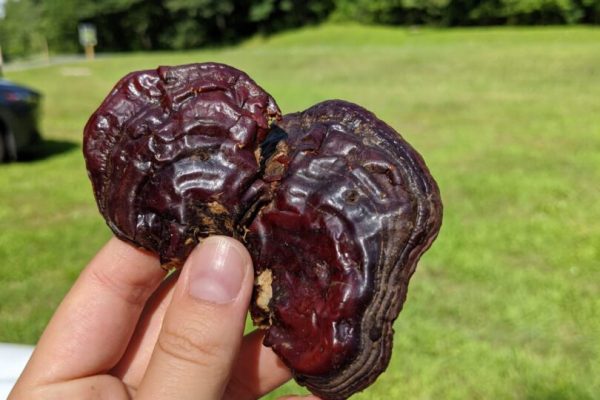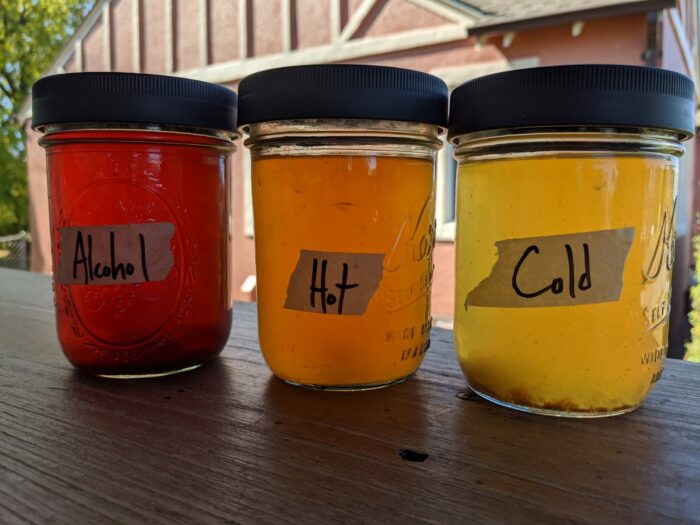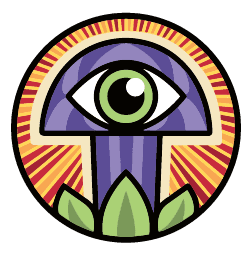
Try our Fungal Ecology Course for FREE
Reishi’s History
In fact, many of the early emperors of unified China were so obsessed with finding the elixir of eternal life that they sent out whole armies looking for Reishi and other potential ingredients to make this mythical drink.
In Chinese art, the Reishi symbolizes great health and longevity and is traditionally associated with luck, royalty, health and recovery, longevity, sexual prowess, wisdom, and happiness.
The Mushroom of Immortality
Reishi’s reputation as a highly medicinal mushroom has led to it being colloquially known as the Mushroom of Immortality, 10,000-Year Mushroom, Mushroom of Eternal life, and God’s Herb, among many other names.
It’s no wonder!
Reishi is packed with powerful medicinal compounds, including more than 200 polysaccharides, over 150 triterpenes, and significant amounts of the amino acids alanine, leucine, aspartic acid, and glutamic acid. Ganoderic acids, a terpenoid, are unique to mushrooms in the genus Ganoderma and have been found in Reishi mushrooms. These acids have been shown to have many health benefits for the human body.
Overall, Reishi mushrooms possess health benefits including:
- Anti-HIV
- Anti-Carsinogenic
- Anti-inflammatory
- Immune system enhancing
- Protect the liver
- Modulators of blood pressure, lipid, and glucose levels
- Anti-depressant
- Promote good sleep
- Help people lose weight by positively changing gut flora
- Promote the effects and reduce side effects of cytotoxic drugs (1)
- Act as a prebiotic

Foraging Reishi
Reishi grows all over the world and is a great mushroom for any beginner forager. Its features are bright and unique and as far as we know, doesn’t have a poisonous look-a-like. Most species of Reishi have a shiny red body with a white underside populated by thousands of tiny, spore releasing pores.
Besides its shiny surface and white bottom, one of its most defining features is its taste. Simply scrape your finger on the underside of the fruiting body and lick your finger. If it has that classic potent bitter taste you experience in Reishi tea or extracts, you know Reishi has found you.
Reishi will always grow from dead and dying trees. Once the mycelium has colonized a tree, it will produce mushrooms every year until the nutrients requisite for its survival are completely consumed.

Try our Mushroom Cultivation Course
for FREE
Growing Reishi
The first people to cultivate Reishi were the Japanese in 1970, making Reishi available not only to elites but to everyone else! In 2000, China alone produced around 13,000 tons of Reishi fruit bodies! Three years later, that figure rose to 49,000 tons. Since then, production has only increased.
But you don’t need to depend on China for your Reishi medicine. You can grow it outside on logs with myceliated plugs. Check out this video from Tony at Freshcap Mushroom to see how to grow Reishi on logs outside.
Or you can grow them inside with a Reishi growkit. In our opinion, this is by far the easiest method out there! Growing your own Reishi from scratch is definitely the most fun, but can be quite challenging. You need a pressure cooker, clean Reishi mycelium, mushroom grow bags, and a space for sterile inoculations. This can be as easy as a plastic box with holes in them, known as a still air box. We’ve also seen people have success growing Reishi in a box with pasteurized substrate!
Did we lose you there? Well, if you’re interested in a ridiculously thorough beginners course on the fundamentals of mushroom cultivation, sign up for our Sacred Mushroom Cultivation course right here! You’ll leave the course with the knowledge and skills to grow practically any kind of gourmet, medicinal, or scared mushroom out there!

Taking Your Reishi Mushroom Medicine
non-linked sources
- Growing Gourmet and Medicinal Mushrooms, Paul Stamets
- Radical Mycology, Peter McCoy
about the authors
With 10+ years of mushroom growing experience and more than 2,000 students taught since 2019, Jasper has set out on a mission to make learning mushroom cultivation Easy, Fun, and Exciting!
This Myconaut did not fit in the traditional academic system, AT ALL. Yet, his thirst for knowledge carried him on a path of life-long learning. With the skillset of a self-taught teacher, he aims to make the art and science of mushroom cultivation accessible to everyone aspiring to be a citizen mycologist.


Sam is a writer, award-winning journalist and professional mycologist from the United States who arrived at the Fungi Academy one midsummer’s day in 2019 and left six weeks later with lifelong friends and a passion for mushroom cultivation.
In the past year three years, he’s built a laboratory and fruiting room in his home, cultivated and foraged over 20 species of gourmet and medicinal mushrooms, started a medicinal mushroom tincture business and returned to the Fungi Academy to teach his techniques to students.

